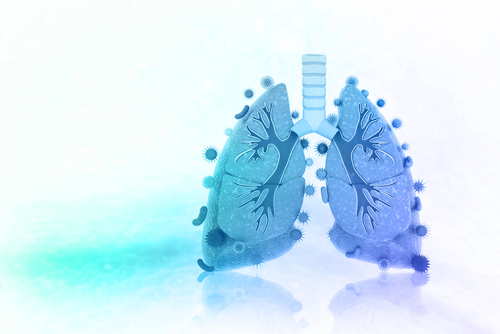Pulmonary Structural Changes Regulate Lung Bacteria in COPD Patients, Study Finds

Severe cases of chronic obstructive pulmonary disease (COPD) can lead to structural changes in the lungs. These changes not only aggravate lung function, they can also alter the bacterial community (microbiome) that reside in the lungs, according to the results of a study published in the journal PLOS ONE.
Results of the study, titled “Influence of Lung CT Changes in Chronic Obstructive Pulmonary Disease (COPD) on the Human Lung Microbiome,” suggest that lung structural changes in COPD patients may alter the way immune system cells react to lung resident microorganisms.
COPD can present several symptoms that vary in terms of presence and severity between patients. To help diagnose this disease and its severity, clinicians often use computed tomography imaging, or CT scan. This can help discriminate between alterations in the structure of lung tissues, including small airway narrowing and fibrosis, which can help explain COPD symptoms.
“COPD has various subtypes that, for example, can be verified by use of quantitative computer tomography (qCT),” Wolfgang zu Castell, head of the Research Unit Scientific Computing at the Helmholtz Zentrum München and co-senior author of the study, said in a news release.
This disease is often associated with bacterial infections of the lungs. For many decades it has been assumed that healthy lungs have natural protective mechanisms that can clear microorganisms. But because the overall lung function is diminished in COPD, bacteria can populate and grow in these patients’ lungs. Still, not much is known about the association of COPD subtypes and the lung microbiome.
“We wanted to investigate if the microbiome in the lungs changes in a way that depends on these [COPD] subtypes,” said Michael Schloter, head of the Research Unit for Comparative Microbiome Analyses at the Helmholtz Zentrum München and co-senior author of the study.
Researchers analyzed the composition of the lung bacteria of 16 COPD patients, with or without structural lung changes detectable by quantitative CT, and compared it with that found in nine healthy individuals.
The team found that the lung microbiome in patients with lung structural changes detectable by CT was different from that identified in patients without detectable changes in CT, as well as from healthy subjects.
“This allowed us to show that the composition of the bacterial community in the lungs of COPD patients without structural changes is very similar to that of healthy subjects,” said Marion Engel, first author of the study. “On the other hand, the bacterial composition in the lungs of ill subjects with structural changes differ significantly from those of the other two groups, regardless of the severity of the disease.”
The research team also found that COPD patients with a mild form of the disease and control subjects had a higher prevalence of Prevotella bacteria, which has been associated with an anti-inflammatory activity.
Severe COPD subtype patients had a higher prevalence of Streptococcus bacteria, whose presence is often associated with COPD exacerbations (disease worsening).
Overall, these results suggest that lung microbial communities shift according to the presence of CT-visible lung changes. These microbiome changes can help explain disease severity and exacerbation events, and can also provide new information regarding responsiveness to therapies.





